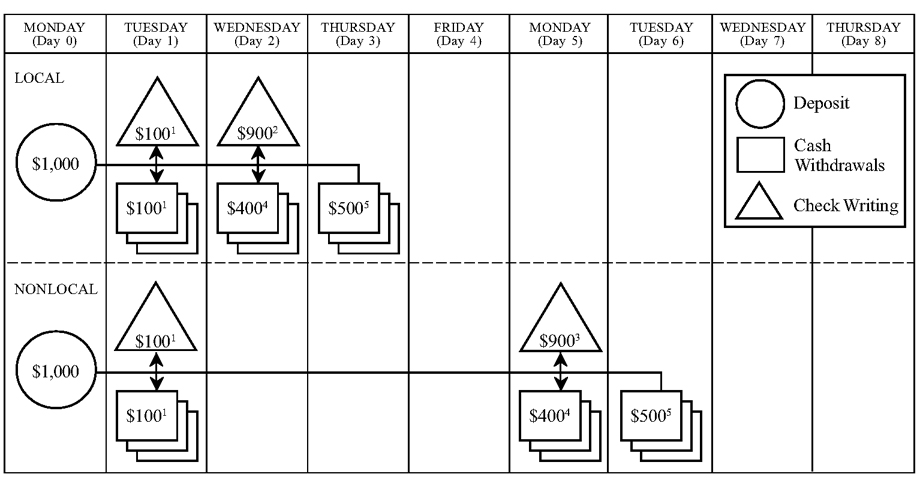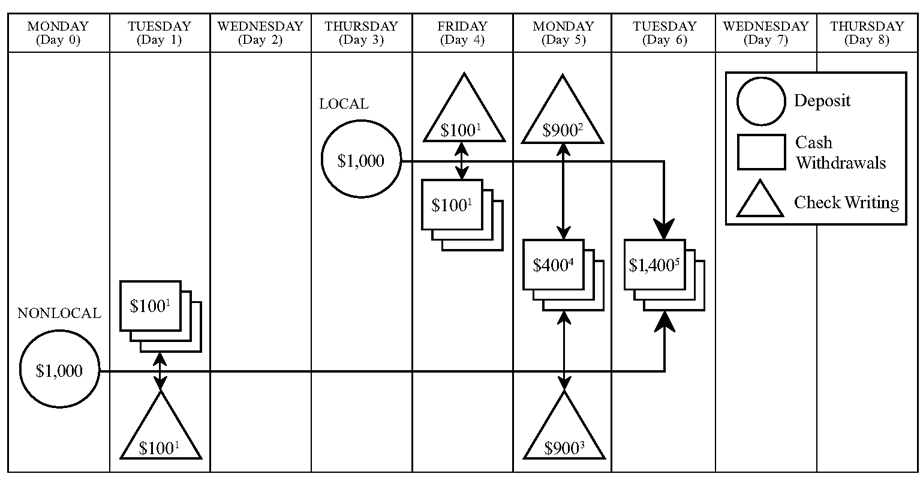The act gives the Board authority
to make improvements in the check-collection and -return systems in
order to shorten the time within which depositary banks learn of the
nonpayment of checks, and thereby reduce the number of situations
when the bank will be required by law to make funds available to its
customers before it learns a check has been dishonored. The Board’s
authority is broad and general and extends to checks that are not
cleared through the Federal Reserve System. Previously, the Federal
Reserve generally had the authority to regulate only those checks
it collected.
9-747
The Paying Bank Section 229.30 of Regulation CC requires that the
process of returning be accomplished in an “expeditious manner,” thus
requiring the paying bank to take steps to speed the flow of returned
checks. The paying bank must dispatch returned checks with the same
speed and diligence with which it would dispatch forward-collection
checks received for deposit by noon on the banking day after the day
of presentment of the returned check. This means that a check presented
to the paying bank on Monday that is not paid must be dispatched as
quickly as a check deposited in that bank on Tuesday morning that
is drawn on the depositary bank. A paying bank also returns a check
expeditiously under the new rules if it returns a local check to the
depositary bank within two business days of presentment, or a nonlocal
check within four business days of presentment.
Paying banks may dispatch returns by the same
manner, and at the same time, as they send forward-collection checks.
This will usually mean that returns will be sent via courier rather
than mail. The paying bank is required to meet the deposit deadlines
and sorting requirements set by any returning bank to which the returned
check is sent.
A paying bank could return all checks to a single returning
bank rather than sending them to multiple presenting banks. Paying
banks can return checks to the depositary bank or to a bank agreeing
to process returns, including the Federal Reserve. If the paying bank
cannot identify the depositary bank from the indorsement, it may find
it necessary to send that returned check back to the presenting bank.
Paying banks have the option to prepare a returned check
for automated processing by high-speed equipment. The bank can produce
a qualified returned check (QRC) by enclosing a returned check in
a carrier envelope or attaching a strip to the bottom of the check,
and encoding the carrier or strip with the nine-digit routing number
of the depositary bank, a special returned check identifier, and the
amount of the check. By creating QRCs, the paying bank facilitates
expeditious return of the check to the depositary bank. Preparation
of QRCs by paying banks also reduces the cost of the overall return
process because returning banks will be able to handle these checks
more efficiently.
Paying banks are required to provide notice of nonpayment
on all returned checks of $2,500 or more, regardless of the channel
of collection. Notices will have to be received by the depositary
bank by 4:00 p.m. (local time) on the second business day following presentment
of a check to the paying bank. This means that if a decision is made
to return a check of $2,500 or more that was presented on Monday,
the paying bank must ensure that the notice is received by the depositary
bank no later than 4:00 p.m. Wednesday.
9-748
Returning Banks Regulation CC holds
returning banks to a standard similar to paying banks. Returning banks
must handle returned checks in an “expeditious manner”; that is, returned
checks must be processed and dispatched in the same general manner
as forward-collection checks or returned to the depositary bank within
the two-day/four-day time period established for paying banks. Returning
banks may return a check directly to the depositary bank or to another
returning bank as long as the route chosen for the return is expeditious.
Returning banks have the option to convert returns to
QRCs. If a returning bank chooses to prepare a QRC, it may take a
day to do so beyond the time when the check would otherwise have been
dispatched. An extra day is not available when returning directly
to the depositary bank, because preparation of a QRC would not speed
such returns.
9-749
The Depositary Bank Regulation CC requires that the depositary bank place
a standard, complete, legible indorsement on the check. This will
help paying and returning banks identify the depositary bank and,
therefore, process the return promptly. Some banks may have corporate
customers that encode checks prior to deposit and place the depositary
bank’s indorsement on the check according to the new standard. Some
small depositary banks may have their correspondent place its indorsement
on the check as the depositary bank endorsement. Failure to follow
the indorsement standard may reduce the right of the depository bank
to recover a loss incurred because of the untimely return of a check
from the bank that delayed the return, if the delay is due to a nonstandard
indorsement.
Depositary banks must pay, in same-day funds, for returned
checks on the day the checks are received. If paying banks and returning
banks that return checks directly do not wish to receive same-day
payment by wire transfer, cash, or Federal Reserve net settlement,
or if the paying or returning bank does not maintain an account relationship
with the depositary bank, the banks may agree on the form of payment,
which may be a check or an ACH payment.
Under the new check-return rules, depositary banks will
receive returned checks and notices of nonpayment earlier and will
receive notices of nonpayment on all large-dollar returned checks,
instead of only those checks which were collected through the Federal
Reserve.





